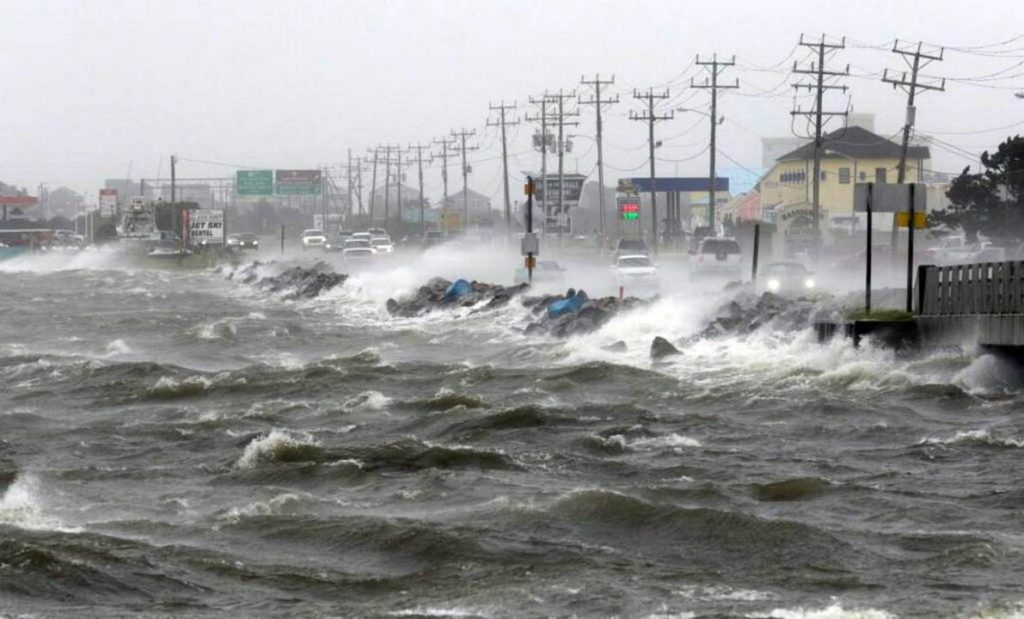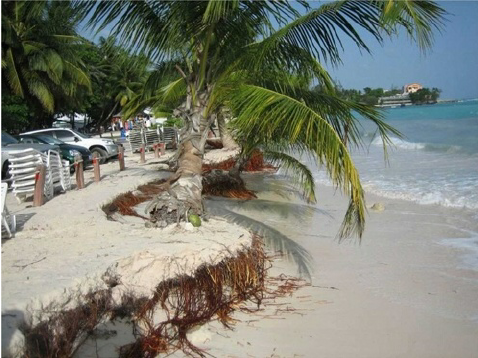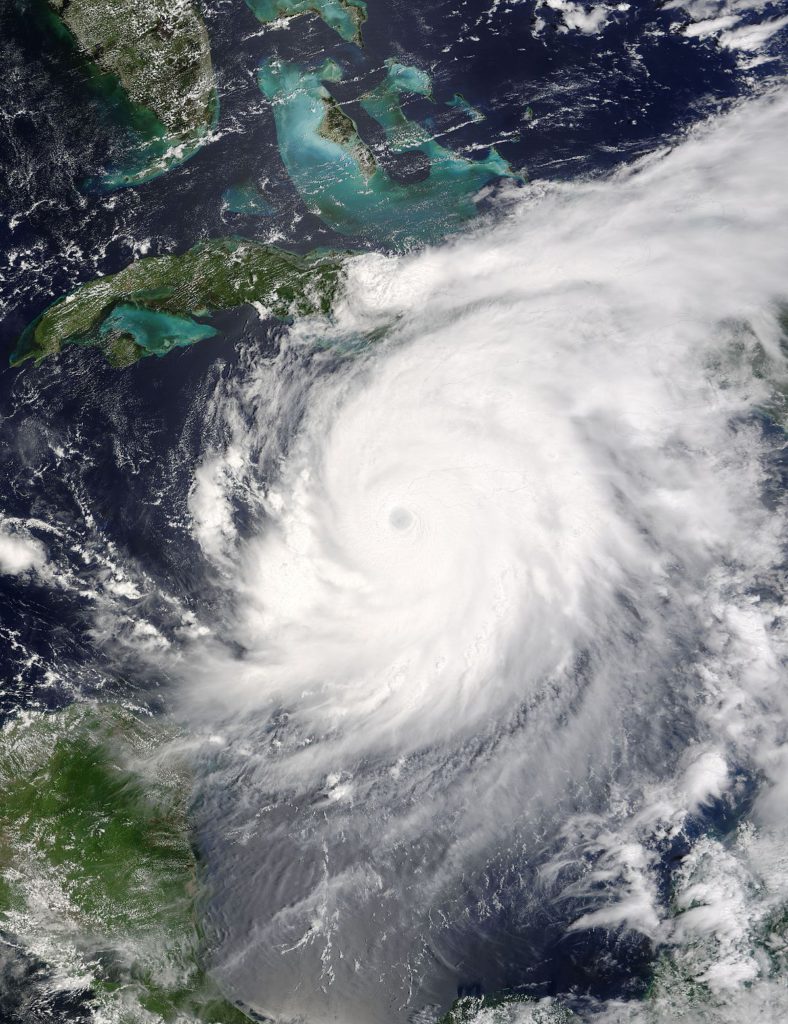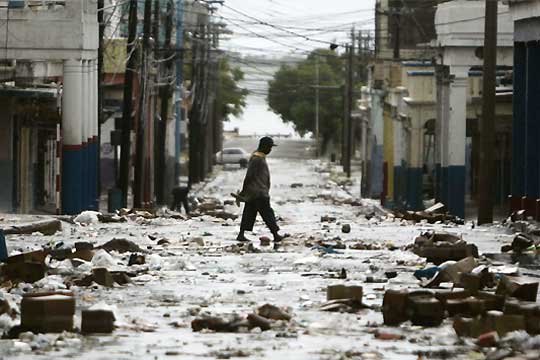What are coastal hazards?
Coastal hazards are natural and manmade events that impact the boundary between the ocean and the shoreline. The Caribbean faces a variety of coastal hazards such as hurricanes, tropical storms often resulting in floods and coastal erosion – as well as pollution and oil spills. Often times vulner ability to these hazards is aggravated by pollution, poor coastal construction practices, destruction of coastal vegetation such as mangroves and unregu lated environmental laws. The challenge remains to reduce risk and loss of life. Due to the common storm surge events during the annual hurricane sea son in the Caribbean and the recent occurrences of shoreline/beach erosion all year round, these haz ards have been highlighted in particular.
Why should we be concerned about coastal hazards?
People who live and work in coastal areas face unique risks from disasters. Risks from coastal hazards are expected to increase in the future as development and populations continue to grow in coastal areas. The devastation wrought by the passage of hurricanes and storms upon coastal communities in the Caribbean is experienced annually. The lives lost, the damage to critical facilities, homes and businesses highlight the need to better understand the impact of coastal hazards on such communities. To reduce this risk, vulnerable populations must mitigate against the hazards in order to preserve life and protect property.
What is a storm surge??
Storm surge results from the combination of low pressure associated with an oncoming storm and high winds which push on the ocean’s surface causing a temporary rise in the level of the sea. The water surges onto the shore, flooding areas inland of the high water mark (a reference mark which indicates the maximum normal stage of tide or flood) and therefore reaching higher along the beach front. Battering waves are capable of reducing buildings to rubble, eroding long stretches of beach, undermining poorly anchored structures and undercutting roads.
How to make your home safe from storm surge?
The elevation of the coastline significantly influences the kind of damage to buildings. In low-lying coastal areas with beaches, damage from storm surge is likely to result causing beach erosion that undermines foundations. The level and rate of erosion that is being observed may be used to inform the “safe” distance from the shoreline, up to which buildings may be constructed without fear of sea damage. Build your home a safe distance away from riverbanks, drains and the beach to minimize the impact of storm surge. Build your house on columns to prevent sand and water from storm surge and flooding rivers from getting into your house.

What is shoreline/beach erosion?
Beach erosion is the removal of sand/gravel caused by wave action and long-shore currents. This process is usually very significant and is often enhanced by storm events. The extent of erosion from storms is directly related to the number, intensity and duration of the storms. Although susceptible to erosion, beaches form the first line of defense against ocean waves, providing a buffer between the waves and coastal properties. When beaches are cut back during storms they progressively lose this buffering ability, making further coastal erosion more likely. As the beach erodes, vulnerable properties are placed at even greater risk.
How can coastal residents and businesses be safe from beach erosion?
Build you homes at safe distances from the water’s edge.
• Plant salt tolerant vegetation to minimise coastal erosion.
• Many coastal ecosystems are capable of adapting to and recovering from natural hazard impacts over time. It is advisable to respect so changeable an environment, and build – with the future in mind – way back from the coast!
- We can keep our beaches for as long as possible for the benefit of all island residents and our visitors if we regulate development and not alter the natural environment.

Photo: Coastal Zone Management Unit
How can coastal residents and business prepare for the hurricane season??
Prepare an emergency supply checklist(see list).
- Make sure your roof is properly fastened and secure.
- Organise and secure all valuable documents in a waterproof container.
- Locate and store concrete blocks to raise furniture in case of flooding.
- Check on persons who live alone or with children who are ill and assist them with preparation.
• Locate the nearest emergency shelter – you may need it, or you may need to help take persons there.
• Locate shutters and ensure they are in good repair.
• Trim overhanging branches, clean eave gutters.
• Stock up on canned and dry foods (3-day supply).
If you are a fisherman or watersports operator
- Repair or build a hurricane resistant shed for all your tools, equipment, boat engines, etc.
- Identify a place to move your craft in an emergency.
- Arrange for proper storage of boats, boat engines and all equipment away from the water and areas that will be affected by storm surge in order to prevent loss or damage during a storm.
- Organise and secure all documents related to your trade or operations in a waterproof container.
Hurricane Bulletin information
Some key hurricane bulletins are the HURRICANE WATCH and HURRICANE WARNING. These bulletins are issued by local authorities depending on the wind speed of the system, the distance of the system from the par ticular country and or the anticipated time frame for the system to impact the particular country.
For further information, please contact your local Meteoro logical Service or National Disaster Management Agency.
What to do when hurricane approach
Before
• Prepare an evacuation plan identify ahead of time where you could go if you are told to evacuate
• Choose several places a friend’s home in another town or an official emergency shelter
• Listen to the advice of local officials and leave if they tell you to do so, taking along all valuable documents previously secured
• Assist the elderly, specially challenged/disabled and persons with children
• Raise furniture on blocks previously stored

During
• Be calm! Your ability to act logically is very important
• Be aware that the calm “eye” is deceptive, the storm will be felt once the eye passes overhead and the winds blow from opposite direction. Trees, building and other objects damaged by the first winds can be broken or destroyed by the second winds (The storm conditions are experienced both before and after the passage of the eye, but the conditions worsen after the passage of the eye!)
• Stay inside! DO NOT GO OUTSIDE, unless it is absolutely necessary
• Listen to the radio for updates and information
After
• Seek medical care at hospitals for persons injured during the storm
- DO NOT TOUCH LOOSE OR DANGLING POWER WIRES. Report such damage to the Electric Com pany, or nearest police station
- Report broken sewer or water mains to the Water and Sewage Authority
- Guard against spoiled food in refrigerators if power has been off for any length of time.
- Unless you are qualified to render emergency assis tance, stay away from disaster areas where you may hamper first aid or rescue workers
- Drive automobiles cautiously. Debris filled streets are dangerous, so keep your eyes on the road
- Take down shutters and save the lumber. Store in a handy place for future use

Facts about coastal erosion
• Coastal erosion occurs when beach material is carried away by wave action, tidal currents, or by defilation (deflation is removal of loose material from the beach or other land surfaces by wave action);
• Coastal erosion may occur slowly over a long period of time or it may be a sudden action caused by storm surge and battering wind-driven waves generated by strong weather systems;
• Some high waves may occur in the Caribbean during the northern hemisphere’s winter months, when strong storms emerge from North America and the wind generates huge waves which travel all the way to the Caribbean;
• Coastal erosion is also cyclical. There are periods when the beach material will erode and there are periods when it will again return. Depending on the location of the beach and other coastal conditions, sometimes the eroded material never returns;
• The beach is a buffer between the waves and homes along the coast;
• Coastal vegetation also serves to keep beach material in place. and reduce the rate of erosion;
• In the Caribbean Sea, 68 in every 100 people live in coastal areas and could be potentially affected by coastal erosion.
EMERGENCY checklist!
✓ Water
• at least 1 gallon daily per person for 3 to 7 days
✓ Food
• at least enough for 3 to 7 days
• non-perishable packaged or canned food / juices
•foods for infants or the elderly
• non-electric can opener
• cooking tools / fuel
• paper plates/plastic utensils
✓ Blankets / Pillows, etc.
✓ Clothing: seasonal / rain gear/ sturdy shoes
✓ First Aid Kit / Medicines / Prescription Drugs
✓ Special Items: for babies and the elderly Toiletries/ Hygiene items / Moisture wipes
✓ Flashlight / Batteries Radio (Battery operated)
✓Keys
✓ Toys, Books and Games
✓ important documents (in a waterproof container or watertight resealable plastic bag), insurance, medical records, bank account numbers etc.
✓ Vehicle fuel tanks filled